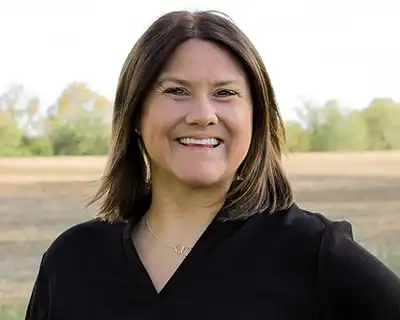2014 Farm Bill program aims to increase consumption of fresh fruits and vegetables to mitigate healthcare costs.
Vegetable farmer Rachel Summers began her regenerative journey with an actual road trip that started by selling her house and buying a van to travel across the country to work on farms and learn from other producers.
During her two years on the road, she saw agronomic benefits of regenerative agriculture practices, including healthier soils and improved plant health, and she began to see a link between increased consumption of fresh produce and positive human health outcomes, too. Now she’s an everyday part of the formal healthcare system that is increasingly evaluating the economic and health benefits of physician-prescribed produce programs.
“When you practice regenerative agriculture, you can see the effects immediately,” says Summers. “It’s like a domino effect, too. It trickles down from the farm into the people that eat your food and helps the local economy as well.”
By using what she learned, Summers now grows more than 30 different types of vegetables throughout the year on her own farm, Resilient Growers Farm in Tulsa, Okla., where she launched a regenerative operation.

When she first started growing, she realized that it would be difficult to find a platform to sell her produce on. “When you get into the regenerative agriculture market, you need to already have a brand established, and that takes some time,” Summers says.
Finding a produce prescription program helped her to avoid market-entry challenges. Companies like FreshRx partner regenerative famers and farming practices with primary-care physicians and clinics to prescribe patients with farm fresh produce.
“I was able to pick up on FreshRx right away and start selling to [produce] in larger quantities while I started building my brand,” Summers says.
Summers says she believes in the benefits of incorporating regeneratively grown produce into a diet and is still very involved with the program today.
Healthcare Nurtures New Farm Markets
For farmers looking to amplify their agricultural practices and help revolutionize the way people view and consume food, joining the produce prescription movement is a way to expand into new markets.
Erin Martin, director of FreshRx, recruits regenerative farmers specifically. “This way of cultivating food not only tastes better, but also expands the local economy, fights climate change and increases positive health outcomes,” Martin says.

Prescribing food emphasizes the idea that the food we consume has a significant impact on our overall health and well-being. The movement was first recognized with federal funding in a 2014 Farm Bill partnership program that provides incentives for patients to eat more fresh produce. Farmers play a fundamental role in this initiative and are eligible for financial incentives in addition to access to new markets.
“We provide technical assistance for the farmers and partner with the conservation commission to help them get funded for hoop houses which expands the diversity of crops available and extends their seasons,” says Martin on how FreshRx fosters a coalition of producers.
The goal of the program is to reduce a patient’s dependency on prescription drugs and improve their overall quality of life, especially for metabolic conditions. Some Type 2 diabetes patients in her network were able limit their use of insulin after one year, and others have been able to reverse their condition, she says. A July 2023 study of prescription programs in the Journal of the American Heart Association concludes: Implementing produce prescriptions among U.S. adults with diabetes and food insecurity would generate substantial health gains and be highly cost effective.
“The reason why we have these health conditions is because we don’t have local food available to people,” Martin says. “In order to fix this situation, you need to source local, be conscious of your sourcing and be ethical about your sourcing.”
FreshRx has supported 20 local, small- and medium-size farmers by providing a consistent market for their products. Many farmers have attested that FreshRx has helped them expand or would not have survived the pandemic without their help.
“This is a great way to get started and act as a buffer,” Summers says. “For example, I’ve been able to have contracts with FreshRx, which gives me a predictable sale in the main season and by getting paid half up front, I am actually able to purchase the materials I need to grow the crops too.”
FreshRx also creates a community so farmers can talk with each other about what is happening on their farms, share equipment, and even access labor through the program to keep their businesses going.
Kat Robinson, owner of Robinson Ranch, says the program gave her “permission to go big on things you would normally tip-toe around as a regenerative farmer.” For example, FreshRx allows farmers to feel more comfortable with ROI because they know they can sell their overages for a fair price to the program.
Another benefit: Farmers get to interact with patients and hear first-hand about how their food has impacted their quality of life. “It’s one thing to have financial success, but it’s incredible to hear how much your food has impacted other people’s lives,” Robinson says.
The farmers hear about the patient’s success stories through social media, annual reports and have the opportunity to meet with them at the end of the year when they graduate from the program.
FreshRx is one of many produce prescription initiatives in the United States. Through the Farm Bill, produce prescription programs help incentivize private and nonprofit organizations to increase access to fresh, local produce.
Learn more about produce-prescription programs near you in the Produce Prescription Program US Field Scan Report: 2010-2020.




